Inclusive Design of the Past Falls Short Today - Mara Kaplan
I had the pleasure of visiting England with my husband this summer. Because this trip was about “playing” for us, and taking time off from work, we went to more history museums and WWII memorials than we did playgrounds. Before leaving, I had asked around to see if there were any playgrounds in London that I shouldn’t miss while I was there.
The answer from many people was the Diana, Princess of Wales, Memorial Playground. The playground, located in Kensington Gardens opened in 2000 to rave reviews. Today 750,000 children visit the playground each year. In fact, if you are planning to go with children, be prepared to stand in line to get in. If you are an adult without children (like us this trip), you can only visit from 9:30 – 10:00 prior to the playground opening.
The playground’s theme is Peter Pan, as J.M. Barrie, the author of Peter Pan, funded an earlier playground on this site. The focal point of the commemorative playground is an intricately detailed pirate ship, moored aground in a sea of fine white sand. Children up to the age of twelve can clamber up the rigging all the way to the crow's nest, turn the giant wheel, explore the cabins, and tug on myriad pulleys and ropes. The mermaid fountains and rocky out-crops allow children to splash around in water and cool down. Beyond the land of pirates lies the tepee camp. There is also the tree house encampment with walkways slung between trees and ladders and slides.
With this build up, I was very excited about visiting the playground. I have to tell you I had two distinctly opposite feelings about the playground. The first was: “what a great playground.” I would have loved to have brought my daughter here when she was little. She would have loved the water play, the imagination, all of the nature, the cozy places to hide in the woods, all of it. She would have been in seventh heaven. I agree that the designers did a fantastic job of using natural materials and creating intimate rooms making a large place feel child-sized. But when I put on my Inclusive Design hat, I was very disappointed.
As mentioned above, the focal point of the playground is the Pirate Ship — the inaccessible pirate ship — the pirate ship surrounded by “hard to push a wheelchair or walker across” white sand. There is no ramp that would enable someone who uses a wheelchair to get to the ship. If you need a firm and stable surface to walk, you can’t even access the bottom of the ship to interact with your friends above.
One of the key principles of inclusive design is that “The Coolest Thing in the Playground needs to be accessible to all.” When the coolest thing is inaccessible, you have all of the able-bodied children playing on what they perceive is the most fun, and all of the children with mobility issues playing somewhere else in the playground. This is segregated play, not inclusive play.
In addition to the pirate ship, a child using a mobility device would have trouble playing in the toddler area, which is a series of playhouses up on stilts. A child could roll up to the playspace underneath the house, but not to the upper areas. There were some very interesting pieces to facilitate the sand play, but again a wheelchair would have trouble traversing in order to get there. There are steps leading up to some of the nature paths, and the play tables had a fixed seat at each place, eliminating the possibility that someone could roll up and join their friends.
In an attempt to create a place where a child in a mobility device could play, the tree-house encampment has a long ramp and pathway for a child using a wheelchair to follow. For children who can get out of their wheelchair, there are some slides to do down; but no way to get your wheelchair back once you get down. For other children, there are ropes, climbers, and bridges to explore from the path. Basically, this entire section of the playground has nothing for a child who is using a mobility device to play with, at odds with the intended goal of the area.
As a result, the designers broke another key principle of inclusive playgrounds: not having “ramps to nowhere.” On a ramped structure there should always be activities to do besides going down a slide or using a climber. Talking tubes, a periscope, and interactive games are examples of easy things to add to a structure to make it more enjoyable for all.
The playground has rich sensory experiences; in fact it is the best part of the playground. There are a wide variety of musical instruments, sand and water play, nature play, and sound play. But all of it could have been laid out in a way to promote better inclusion.
For example in one area, they effectively created an “autism corner.” I have seen this many times in playground designs. People have learned that children with autism like to have cozy spaces, vestibular motion, and other sensory experiences, such as musical instruments. All this is true. The problem comes when the designer decides, “since they like all these things, let’s put them all together.” The purpose of cozy spaces is for a child who gets overwhelmed to be able to step away from the play to a quiet space; putting musical instruments next to the quiet places defeats this purpose.
The space would have worked better for children with autism as well as other children if the sound play and musical instruments were located with other noisy play activities and the cozy spaces located with other quieter play experiences, particularly if they’d better utilized the extensive arrangement of cut-outs and niches in the bushes and grasses.
In 2000 this playground was on the cutting edge of inclusive design. In the last 13 years, we have had the opportunity to watch children play on this type of playground. We have learned a lot about the importance of layout and surfacing. We have learned strategies to encourage children to play with each other and not just next to each other.
The Inclusive Play Design Guide, which I helped to write, brought together all of this learning together into one document. I look forward to the next generation of playgrounds filled with nature, pretend play, and unique sensory play experience where all the children are truly engaged.
View the pictures we took while visiting the playground at http://www.accessibleplayground.net/?p=4453


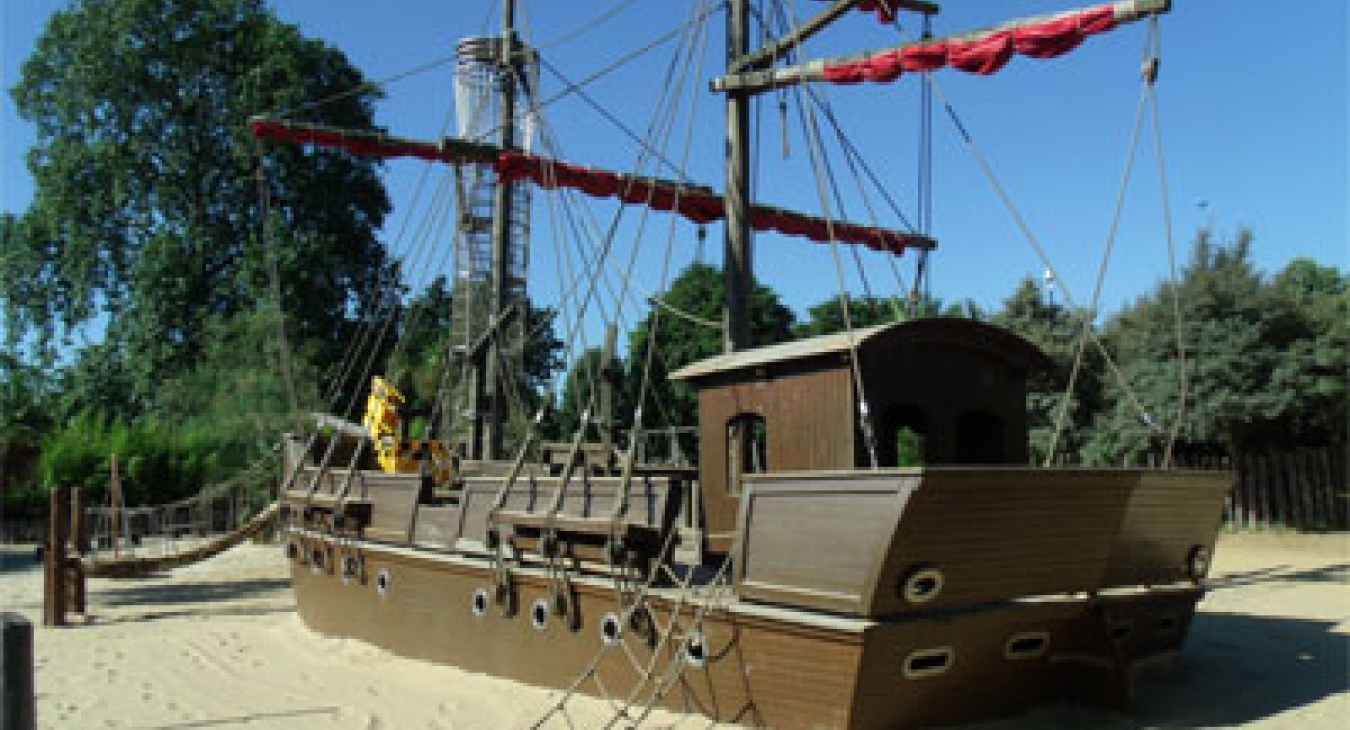
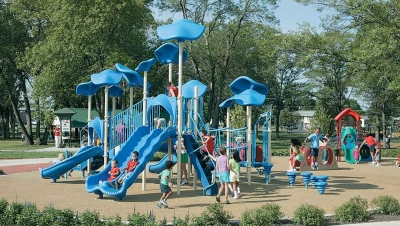
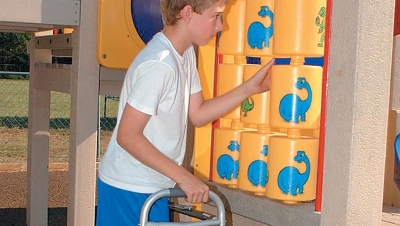
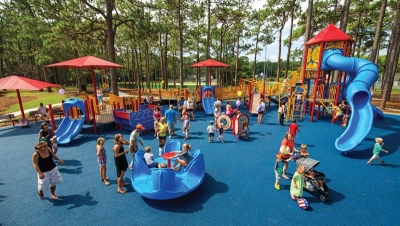

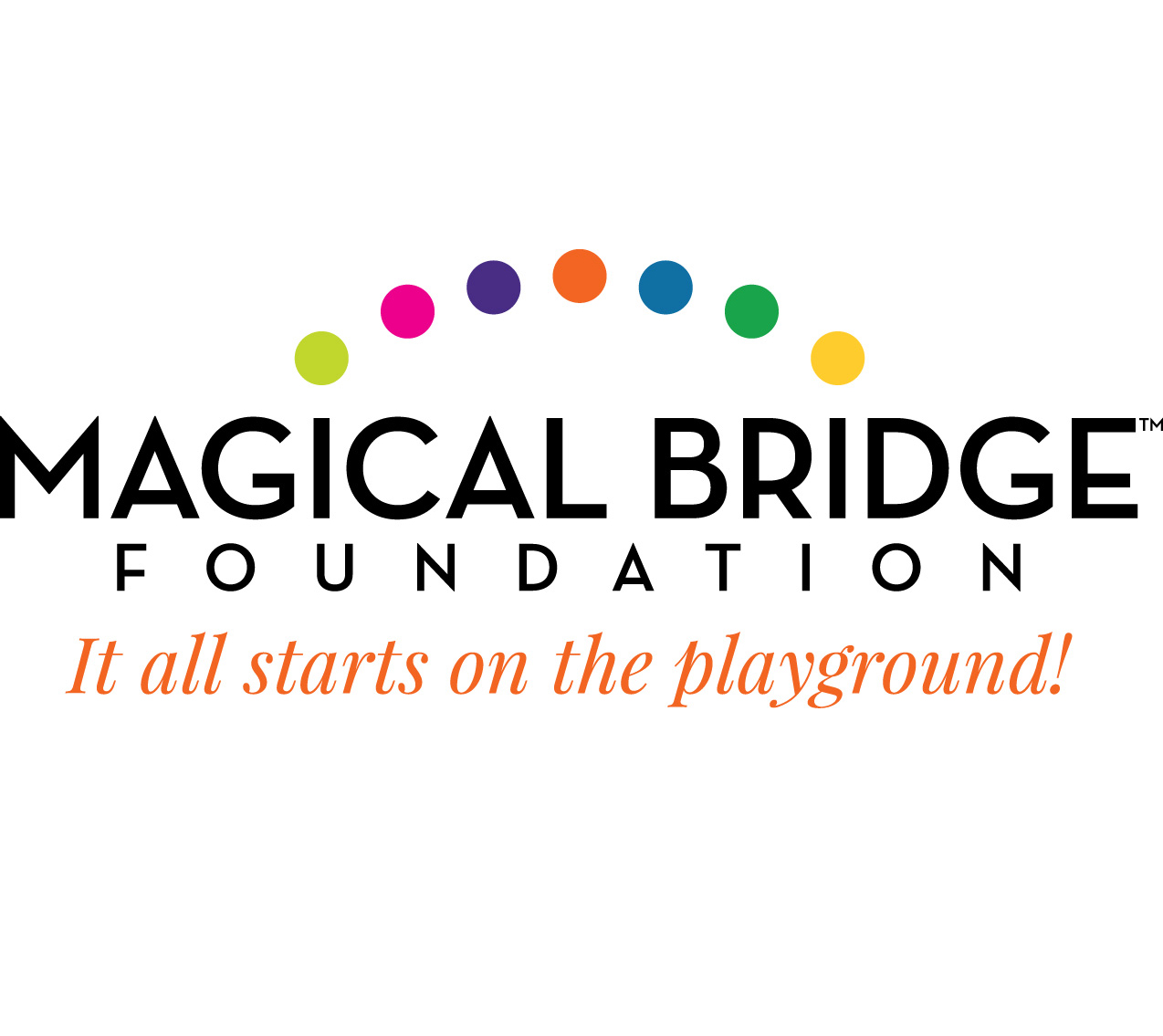





Princess Diana's Playground
Robert--
I was shocked at the lack of safety surfaces. Do you know the laws in the UK are for surfacing? Needless to say I was very disappointed--it could have been wonderful.
Mara
Princess Diana's playground
Not only is the sand totally inaccessible it will provide little or no protection from falls.
Very dissapointing all together.